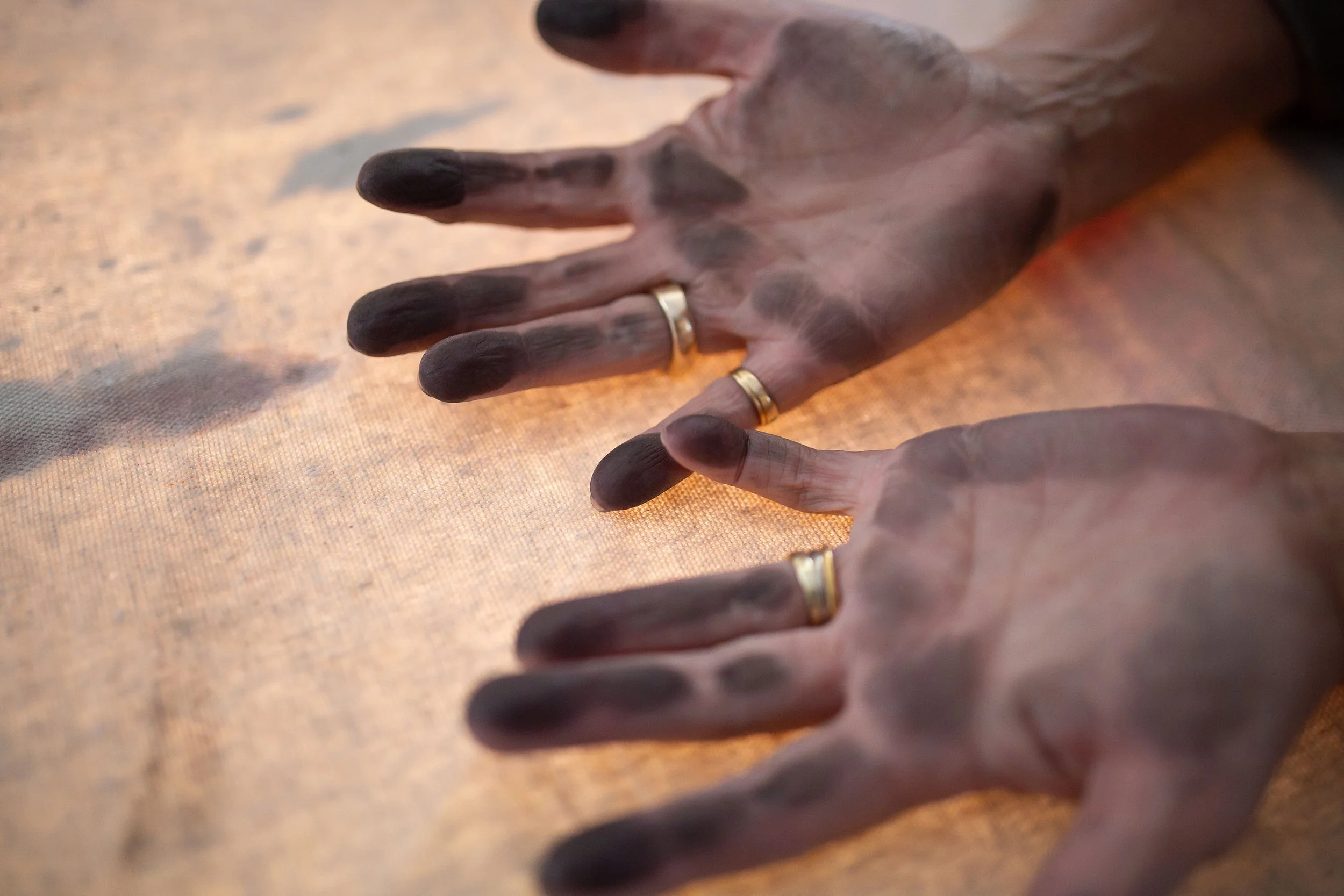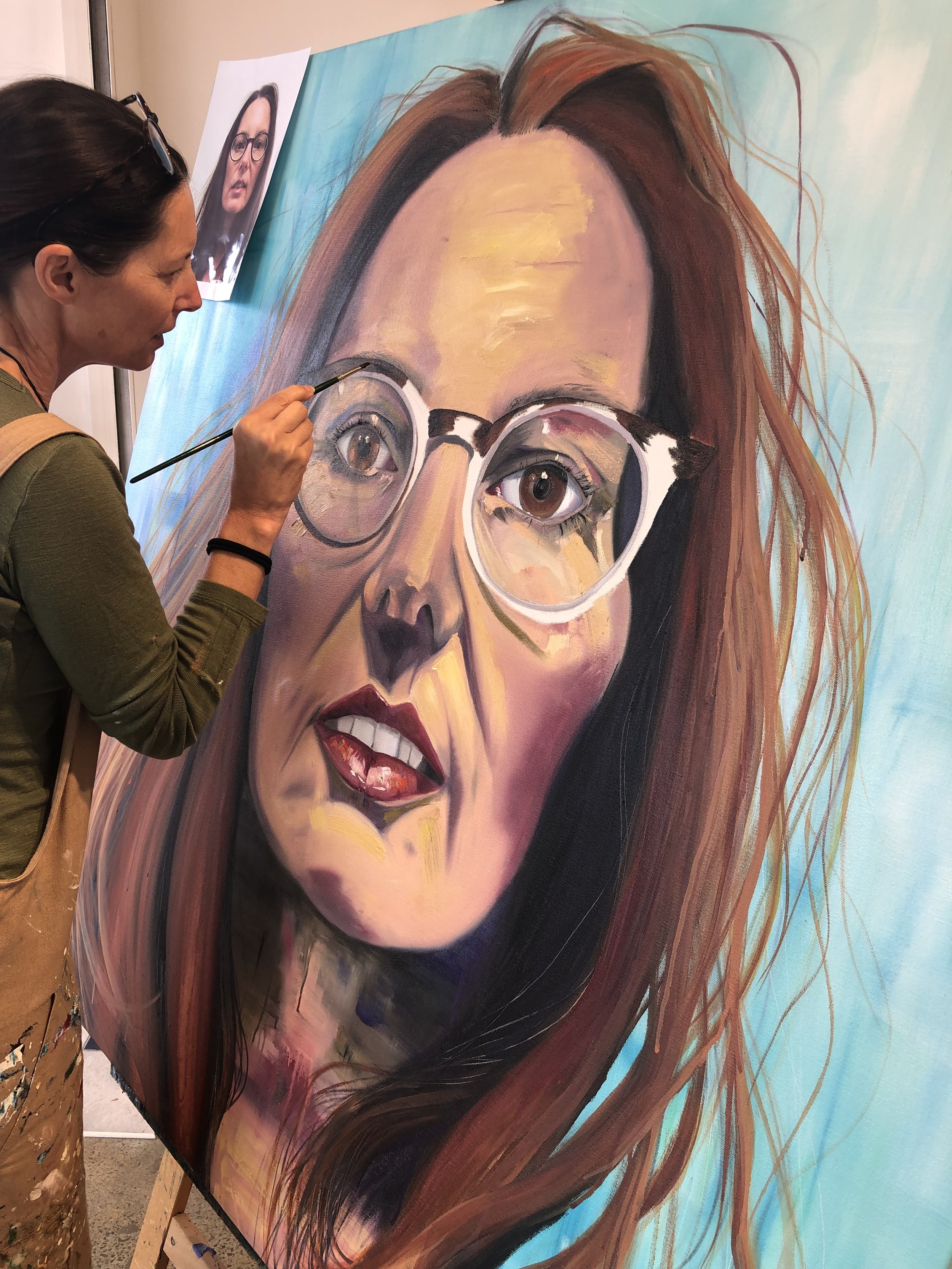Beyond the surface
Artist Jacki Barklie fuses emotion and bold experimentation to create striking, unconventional works.
Artist Jacki Barklie fuses emotion and bold experimentation to create striking, unconventional works.
For over three decades, Jacki Barklie has explored the delicate interplay between human connection and identity through both her creative professions, first as a hairdresser and now as a multi-disciplinary artist.
With roots in Africa and a passion for the psyche, her work delves into themes of fragility and desire, often expressed through mixed media, printmaking, textiles and photography.
After completing a Bachelor Degree in Creative Industries, Jacki embraced experimentation and introspection, creating art that pushes boundaries and celebrates the unconventional. Here she shares insights into her process, and the emotional resonance behind her evocative works.
UNO: How did your creative background in hairdressing shape your approach to art today? Jacki: Hairdressing trained my eye for form, texture and design. It was sculpture in motion. I treated hair like fabric, shaping and layering with intention. Competing creatively honed my skills, but it was always about the human connection. Listening to people and understanding their emotional relationship with aesthetics now flows into how I create and share my art.
You were brought up in Africa. Can you share a specific memory or cultural influence that continues to inspire your art? Africa lives in my bones. There, creativity comes from what’s at hand, such as clay, dyes, dust, fabric. That bold innovation still inspires me. I remember painting with earth and watching patterns emerge from chance. Sometimes, I feel you can almost smell African dust in my work. Its textures, warmth and raw energy continue to guide my hands.
What was the turning point that led you to pursue a Bachelor Degree in Creative Industries later in life? After 37 years in hairdressing and countless night art classes, I craved full immersion. I didn’t want a traditional fine art degree. I needed one that embraced creative risk. The Creative Industries degree was a perfect fit for me. I’m a multimedia artist whose work evolves from one material to the next.
How do you decide which medium, whether acrylics, textiles, printmaking or photography, best suits the idea or emotion you’re trying to express? It starts with a feeling or story. From there, I follow the materials that speak to that idea. I explore the tension between materiality, light and shadow, stillness and movement. Whether I choose textiles or ink, the medium must hold that emotional vibration. It’s instinctive, process driven and always rooted in intention.
What role does experimentation play in your creative practice? Experimentation is everything. I’m a curious artist drawn to risk and discovery. I often research ancient methods and remix them with contemporary techniques. I love when the unexpected happens, like when a material surprises me. That’s where the magic is. Every piece starts as a question, and sometimes the answer comes through failure.
How do you think our environments shape our emotional or psychological states? We’re deeply shaped by our surroundings. My art often reflects the fractured rhythms of the world and offers a kind of stillness in return. I explore contrasts in form, reflection, old and new, raw and refined. Within these tensions, I find beauty. My work invites presence, asking viewers not just to look, but to feel.
As someone who celebrates the unusual, what draws you to the unconventional or unexpected? The unexpected excites me – it’s alive and full of truth. While I admire tradition, I often find it too familiar. The unconventional feels raw and present. It’s not trying to be anything but itself. That honesty inspires me. It challenges the rules, breaks them if needed and that’s where true innovation begins.
How do you stay true to your raw, emotionally-driven approach? I know my “why.” I show up in the studio daily and follow what feeds my soul. I let the process guide me, not trends. I create art that moves me first, trusting that it will resonate with someone else. If I had to make formulaic work, I’d lose the heartbeat. Emotion keeps it alive.
What advice would you give to someone wanting to explore their creative side later in life? Start now. But take it seriously. Don’t shrink yourself to ‘just crafting.’ Be brave, be messy, try everything. Follow what excites you. Let failure be part of the fun. You’re never too old to become who you are creatively meant to be. The second half of life is the perfect time to rediscover yourself.
How long have you been in the Bay and what do you love about it? We’ve been in the Bay for 27 years. It has been our longest home since emigrating twice. The weather drew us in, but our friends and pace kept us. My husband is my rock, and our home is a sanctuary. Our grown kids are flying, and I’m living the dream with my studio, surrounded by light, love and space to create.
Jackie is holding a solo exhibition titled ’SURFACE TENSION' from October 24 to November 2, celebrating her new body of work.
Bird’s-eye view
Julian Godfery’s unique interpretation of the world is captured in his intricate artworks.
Julian Godfery’s unique interpretation of the world is captured in his intricate artworks.
Artist Julian Godfery happily admits his biggest source of artistic inspiration is his mum.
He has been making art since he was five years old and actually inspired her to begin painting again 20 years after she graduated from art school. His mum is well-known artist Jane Galloway, whose work can be found on greeting cards, paintings and prints in galleries around New Zealand. Her full-time artistic career began 25 years ago after she was inspired by art Julian made for a kindergarten fundraiser. Now their work is displayed together in the same Waikato galleries.
Here, UNO talks to Julian about his passion for art.
UNO: What drew you to your particular style of art?
I like doing detailed drawings in pen and ink. I have been inspired by watching mum do realistic watercolours, which she used to paint on paper stretched over the dining table. She would cover the work with blankets and a plastic sheet whenever we wanted to have a meal. I got to see what she was making up close. I always carry a sketchbook and pens with me when I go to my day base at Enrich Plus in Hamilton.
What’s it like to grow up in an artistic household?
From when I first started school, my parents always worked on a daily diary with me and I got to illustrate the stories of what happened each day. I was obsessed with the Home Alone movie series for a long time, so a lot of my drawings were about designing traps to catch the robbers. I still have most of the diaries 30 years later.
Who or what are your greatest inspirations?
My mum did a series of paintings called “There Is No Planet B”, which showed New Zealand birds flying over motorways and cities. They inspired me to do drawings of towns and birds too. I have done a lot of owl paintings and some of chickens because I like drawing the feathers. My mum’s favourite is called “Midnight Morepork”.
What has been your favourite piece to make and why?
Because I love owls I think “Night Owls” is one I still really like. Also, over the Christmas holiday, I spent weeks drawing a big piece on watercolour paper. It was called “Invisible Magic” and was what you can see in water when you use a microscope. Mum is always getting me to look for new subjects for drawings on my tablet. I entered it in the IHC Art Awards a few years ago and it won the People’s Choice Award. Then I sold it at the auction, which was really exciting.
How long have you been living in the Waikato and what do you love about it?
I lived in Raglan until I was 21. Mum’s house is next to the estuary and harbour so I get to see herons, tui, spoonbills and fantails flying very close by all the time. I moved into supported living in Hamilton but I still come home regularly and I always bring my sketchbook to show mum what I’m working on (and to watch the All Blacks games).
What are your future plans in terms of your art?
I would like to have another exhibition at my Mum’s gallery in Raglan. It’s called Artists at Work and sometimes I go there to draw while she works
in the gallery. At Labour Weekend in October I always take part in the Raglan Arts Weekend where I show my latest drawings. We used to have an open studio at home and heaps of people would come to look at our work but now we can have it at the gallery. I look forward to it every year because I get to talk to people about my art. I’m working on a playlist of music for the weekend but mum says she wants to ok it first.
Where can we find your artwork?
Come and visit me over the Raglan Arts Weekend to see my latest
artworks at the Artists at Work Gallery. My work can also be seen in The Little Gallery, Tairua and Whangamata; Soul Gallery, Hamilton; Heritage Gallery, Cambridge; Artists at Work Studio and Gallery, Raglan.
Raglan Arts Weekend is a self-guided tour of artists’ studios being held from October 26-28, 10am to 5pm daily.
Find prints of Julian’s work at palmprints.co.nz
Art and soul
Visual artist Shona Moller brings artistic diversity and a unique approach to Mount Maunganui's arts scene
Visual artist Shona Moller brings artistic diversity and a unique approach to Mount Maunganui's arts scene.
After more than 20 years of professional practice from her beachfront Kapiti studio gallery, Shona Moller now calls Mount Maunganui home. From her gallery space at 102 Maunganui Road, Shona creates new works within two very different genres that tell stories of heritage and belonging within contemporary artworks, and reflect the unique Bay of Plenty light and energy through lusciously applied oils in representational works of local landscapes and seascapes.
UNO: Tell us about your background. How did you become an artist?
Shona: Perhaps, to some extent, artists are born into it. I was a curious, explorative child, expressing and recording through artworks from an early age. In some respects, then, art is my first language.
How would you explain your art approach now?
Similar to that as a child; explorative, intuitive, although now I work within two diverse genres where each allows me to express myself fully in different ways. Through representational works, which is really just a flash word for an artistic representation of what you can see, I explore my surroundings, my environment, intimately. I sketch, photograph and plan larger works on canvas where it is my intention to capture essence, mood, and resonance as opposed to finer details. My more contemporary urban inspired works tell stories of heritage, English and Maori, employing icons like the London Tube map with New Zealand place names. These speak on a national level as well as a |personal one.
You self represent. Why does this work for you?
I realise how fortunate I am to have my own gallery; I don't take this for granted at all. Self-representation works for me on many levels. First, it frees me to work how I want, at a pace where I can do my best work. I am
not obligated to gallery directors, to create what sells well, to deadlines and timeframes. While I take commissions, I can be selective, and I'm very grateful that my work has commemorated many significant milestones in peoples' lives. Also, being accessible allows for a real connection with those for whom my art resonates.
What inspires you to create?
Too many things! I'm inspired by East Coast sunrises, full unapologetic new beginnings. I'm inspired by (what someone much more articulate than me coined) the DOGS, the Dead Old Guys; Van Gogh, Monet, Picasso, Vermeer, Rembrandt. I'm inspired by those artists that had the foresight and the genius to simplify forms when others strove for realism, to leave brushstrokes proud where others blended, to use pure colour where others mixed. I'm inspired by narrative, and the circle of energy created between myself as the artist, a completed artwork, and the viewer.
What is your favourite piece and why?
It sounds very PC to say, but it's always the one I'm working on.
What have been your career highlights?
I have loved every aspect of having my own space. Over and above that, the sell-out London show was an unexpected success. Travel, art tours; I've painted in Renoir's garden, followed Van Gogh's exact footsteps in Arles, sketched where Monet painted his water lilies. I've featured in many media outlets over the years; magazines and Holmes back when that was a thing. Katherine Ryan interviewed me for Radio New Zealand, and most recently 7 Sharp spent a full day with me. The article aired in July, and anyone interested can view it via my website. I think the biggest career highlight though, in all honesty, in no small part because of the amazing support I have received, is that I get to live my art every day. Oh, and UNO, obviously!
UNO: What do you love about living in the Bay?
Let me count the ways. Sunrises, as mentioned. The sense of coming home, evident in the smells of white sand warmed by a spring sun, sea foam, and rock pools. Mynar birds. Tui song alarm 'clocks'. Coffee at café sharing tables. Dappled sunlight through ancient base track pohutukawas. Port lights reflected in the inky sea. Mauao, her moods, her constant grounded reassuring presence in all weathers. 'God rays' through thunder clouds. Whānau. The people! Bay people are good people. I have been so beautifully welcomed into the community here, and from what people are telling me, they're delighted to once again have an organic, authentically artist-run gallery space at The Mount. So, can I just say thank you to everyone for their generosity of spirit. I feel seen, acknowledged, and home.













